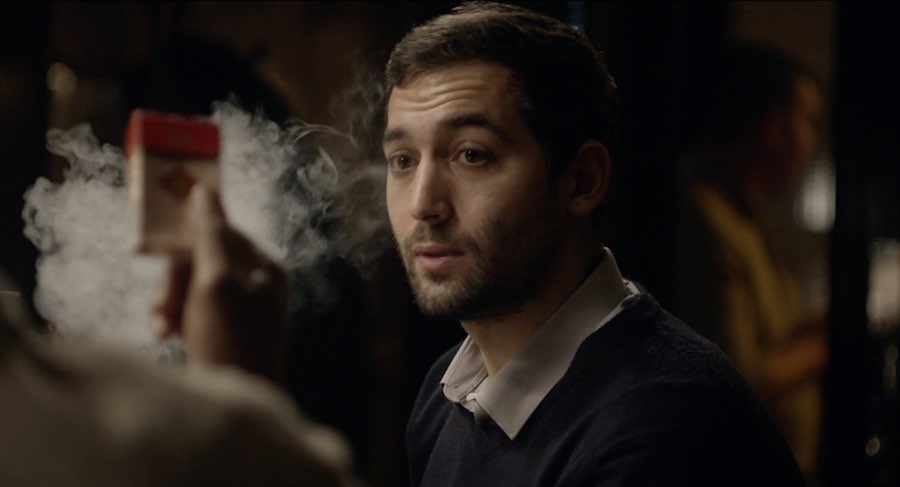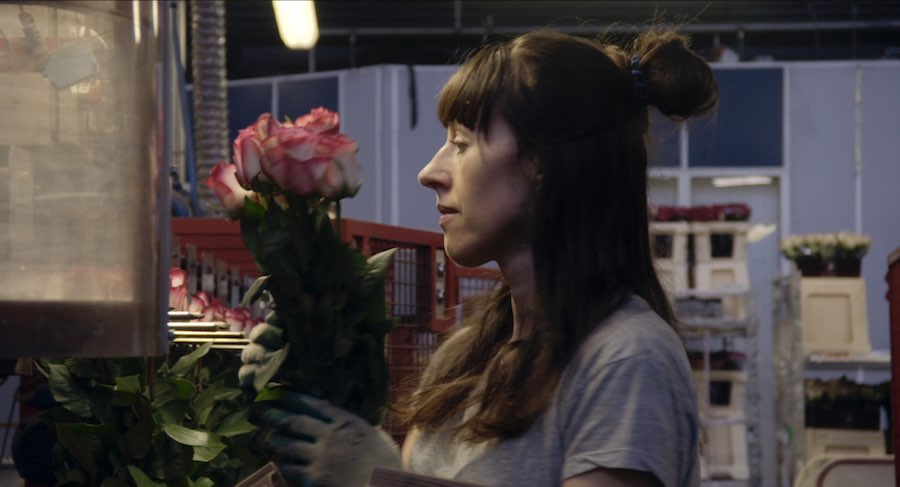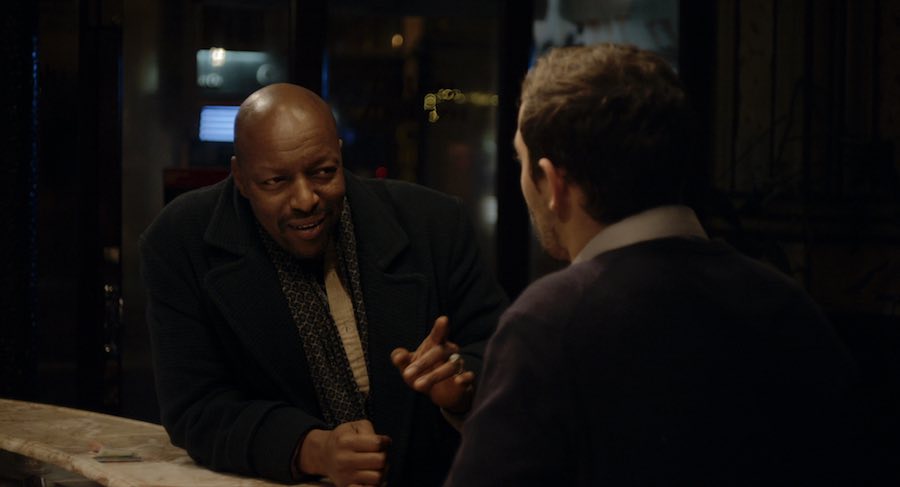
“Each of my films taught me how to make the following one different”. Artista visivo e filmmaker, Éric Baudelaire presenta in occasione della XV edizione di Lo Schermo dell’Arte (16-20 novembre, Firenze) il suo recente lavoro: A Flower in the Mouth(Francia 2022, 67’).
Con all’attivo mostre e partecipazione a festival di tutto il mondo, Baudelaire utilizza la cinepresa per riflettere sulla società con un rimando costante alla condizione umana. Il film proposto al festival si presenta come un dittico: si apre con la frenesia del più grande mercato di fiori al mondo, ad Aalsmeer, in Olanda e termina invece con una riflessione più intima e personale ispirata alla pièce teatrale di Pirandello L’uomo dal fiore in bocca del 1922. Se dunque il primo atto ha un carattere documentaristico e segue da vicino la macchina produttiva di Aalmeer, dove ogni giorno migliaia di fiori vengono trattati e stoccati in grandi hangar refrigerati per poter essere venduti, il secondo ruota invece intorno all’incontro tra un viaggiatore, interpretato da Dalì Benssalah e un uomo malato, il rapper Oxmo Puccino, che nella calma della notte si trovano a riflettere sul senso della vita e sulla sua precarietà. Baudelaire con questo lavoro ci spinge a riflettere sulla misteriosa relazione tra la nostra condizione esistenziale e le infrastrutture dell’economia globalizzata.
Seguono alcune domande a Eric Baudelaire —
AC: The film you will present at the festival, “A Flower in the Mouth”, can be divided into two different parts. Why did you decide to divide your film into two acts? What binds them? And then, why did you decide to make a reference to Pirandello’s play “The Man With a Flower in His Mouth”?
EB: Luigi Pirandello’s original play, The Man With a Flower in His Mouth (1922), is set in a railway station where a man with an incurable disease encounters a stranger. The flower at the corner of the protagonist’s mouth is an epithelioma, a tumor that was a death sentence in Pirandello’s time. The stranger awaits the morning train to return home to the countryside, gnawed by the small worries and setbacks of a day in the city. The protagonist is sitting in a café that he frequents every night because it never closes. He is passing the time he has left, and with the consciousness of his imminent death grows a burning desire to observe the life around him, to feel it, projecting himself through his conversation with the stranger into the minute details of a world he scrutinizes intensely as a way of escaping his pending fate.


To adapt this piece to the present I imagined a dual structure that is part observational documentary, part fiction. The first act is an intense dive into the frantic rhythm of the world’s largest flower market in Alsmeer, Holland. This extended documentary prelude sets the stage for a very personal second act unfolding at night, culminating with a long conversation in a café adapted from Pirandello’s play.
A Flower in the Mouth is a work about illness, both real and metaphorical: the certainty of death as a reality that forces us to rethink our relationship with the world of the living, but also illness as a metaphor for man’s impact on the planet, producing both beauty and destruction.
AC: How was working with the rapper Oxmo Puccino? And how did you manage to combine a non-professional actor with a professional one?
EB: Casting was the big question when preparing the film. I did not want to alter the beauty of the original text, even though it is somewhat dated, stylistically. I wanted to keep the strangeness of this theatrical century-old language. The text has a poetic density that couldn’t be entrusted to just anybody. It was producer Sylvie Pialat’s idea to give the role to Oxmo Puccino. She felt something in his way of being that connected with the character. He doesn’t have a lot of experience in film but as a poet and singer-songwriter, he has tremendous experience with words. I didn’t try to make him into an actor, in the full sense of the word, not in the few weeks we had, but just have him take possession of the text, to embody it, to speak it in his own natural and unique way.
Oxmo’s character doesn’t fit into any social category, and Oxmo subverts codes. He’s in this in-between space we wanted for the film. The overcoat makes him look like a prince of the night. But as soon as he comes on screen, we have to sense that this man is unplaceable, that there’s no box to fit him into, no stereotype: is he a distinguished gentleman? A celestial vagrant?
AC: I read that since 2010 filmmaking has become central to your work: what has changed over the years in the way you work and the way you approach making movies?
EB: I am very eclectic. None of my films look like the previous one. This is probably because I am self-taught : each of my films taught me how to make the following one differently.









